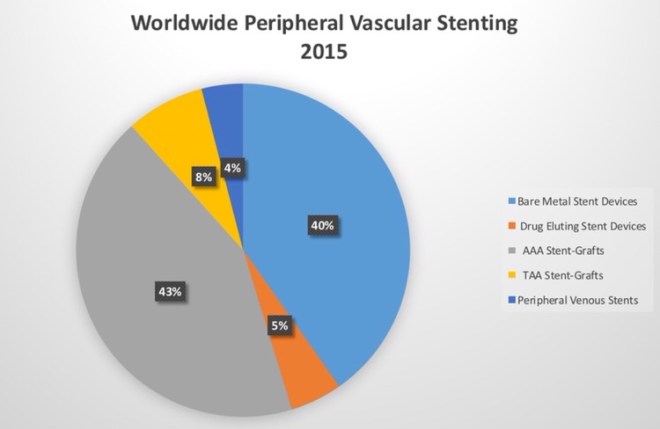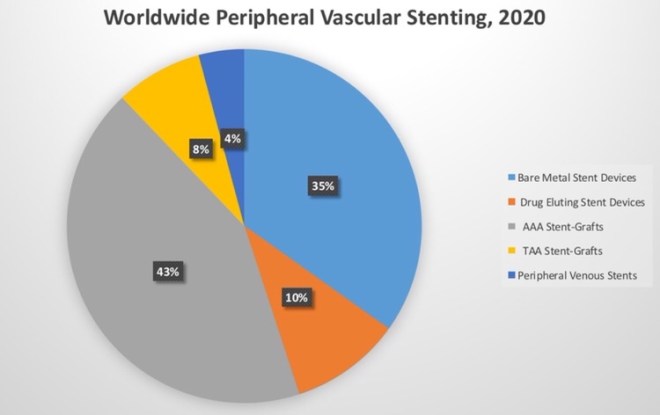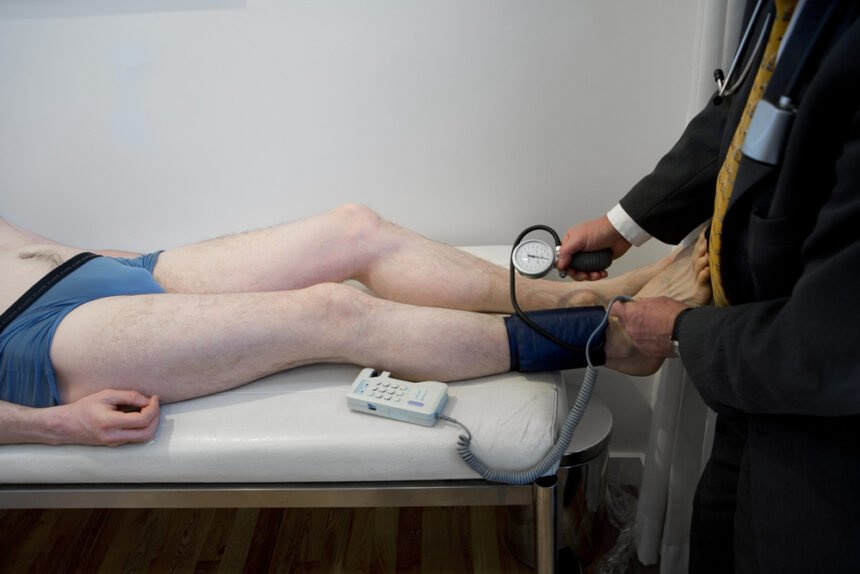First introduced about two decades ago as a bailout technique for suboptimal or failed iliac angioplasty, peripheral vascular stenting gradually emerged as a valuable and versatile tool for a variety of primary and adjuvant applications within non-coronary vasculature. First introduced about two decades ago as a bailout technique for suboptimal or failed iliac angioplasty, peripheral vascular stenting gradually emerged as a valuable and versatile tool for a variety of primary and adjuvant applications within non-coronary vasculature. Today, peripheral vascular stenting techniques are commonly employed in the management of the most prevalent occlusive circulatory disorders and other pathologies affecting abdominal and thoracic aortic tree and lower extremity arterial bed. Stents are also increasingly used in the management of the debilitating conditions like venous outflow obstruction associated with deep venous thrombosis and chronic venous insufficiency. Peripheral vascular systems include lower extremity bare metal and drug-eluting stents for treatment of symptomatic PAD and critical limb ischemia resulting from iliac, femoropopliteal and infrapopliteal occlusive disease; stent-grafting devices used in endovascular repair of abdominal and thoracic aortic aneurysms; as well as a subset of indication-specific and multipurpose peripheral stents used in recanalization of iliofemoral and iliocaval occlusions resulting in CVI. In 2015, these peripheral stenting systems were employed in ovet 1.5 million revascularization procedures worldwide, of which lower extremity arterial stenting accounted for 81% of such interventions, followed by abdominal aortic aneurysm and thoracic aortic aneurym endovascular repairs. Clinicians in the U.S. performed 34.1% of worldwide covered peripheral arterial and venous procedures, 33.1%), major Asian-Pacific states (24.4%), and the rest-of-the-world with 8.4% of peripheral stent-based interventions. During the forecast period, the global volume of peripheral arterial and venous stenting procedures is projected to grow an average of 5.5% and 6.2% per annum, generating over $4,620 million in cumulative product revenues in the year 2020. The largest relative and absolute dollar gains in all covered product segments can be expected in Asian-Pacific market geography based on rapid transition to modern interventional radiology practices and availability of funding in China. Similar, but somewhat slower growth trends might be observes in the ROW zone, albeit from a much lower base. Highly mature U.S. and Western European markets are likely to register relatively modest advances both in corresponding procedure volumes and device sales.  Source: MedMarket Diligence, LLC; Report #V201, “Global Market Opportunities in Peripheral Arterial and Vascular Stents, Forecast to 2020” publishing February 2016).
Source: MedMarket Diligence, LLC; Report #V201, “Global Market Opportunities in Peripheral Arterial and Vascular Stents, Forecast to 2020” publishing February 2016). 
Peripheral Vascular Stenting to 2020

I serve the interests of medical technology company decision-makers, venture-capitalists, and others with interests in medtech producing worldwide analyses of medical technology markets for my audience of mostly medical technology companies (but also rapidly growing audience of biotech, VC, and other healthcare decision-makers). I have a small staff and go to my industry insiders (or find new ones as needed) to produce detailed, reality-grounded analyses of current and potential markets and opportunities. I am principally interested in those core clinical applications served by medical devices, which are expanding to include biomaterials, drug-device hybrids and other non-device technologies either competing head-on with devices or being integrated with devices in product development. The effort and pain of making every analysis global in scope is rewarded by my audience's loyalty, since in the vast majority of cases they too have global scope in their businesses.Specialties: Business analysis through syndicated reports, and select custom engagements, on medical technology applications and markets in general/abdominal/thoracic surgery, interventional cardiology, cardiothoracic surgery, patient monitoring/management, wound management, cell therapy, tissue engineering, gene therapy, nanotechnology, and others.






